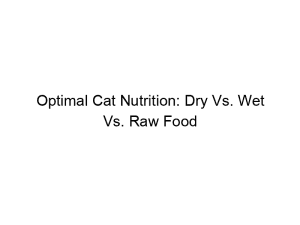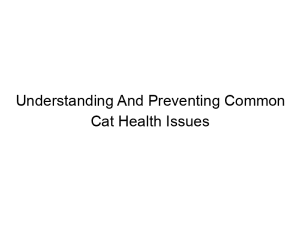Have you ever wondered what your cat is really thinking? That subtle twitch of the tail, the slow blink, the sudden ear flick – these aren’t just random movements. Understanding cat body language: What your cat is trying to tell you is crucial for building a stronger bond with your feline companion and ensuring their well-being. This comprehensive guide will delve into the fascinating world of feline communication, teaching you to interpret their signals and respond appropriately, whether your cat is a seasoned companion or a new addition to your family. You’ll learn to decipher their postures, vocalizations, and even the meaning behind those enigmatic tail swishes. Prepare to unlock the secrets your cat has been trying to tell you all along!
Effective communication is the cornerstone of any
strong relationship, and this holds true for our bond with our cats. Misinterpreting your cat’s signals can lead to misunderstandings, stress for both you and your cat, and even behavioral problems. Learning to understand their body language allows you to anticipate their needs, respond appropriately to their moods, and build a deeper, more trusting connection.
The Importance of Posture
Understanding Body Position
A cat’s posture speaks volumes. A relaxed cat typically sits or lies with a loose, supple body, tail relaxed, and ears upright. Conversely, a tense or fearful cat may crouch low to the ground, flatten its ears, and arch its back, sometimes even hissing or spitting. This is a clear warning sign to back off and give them space.
Facial Expressions: Eyes, Ears, and Mouth
The Telltale Signs in a Cat’s Face
A cat’s face is a treasure trove of information. Slow blinking is a sign of affection and trust, while wide, dilated pupils might indicate fear or excitement. Ears that are flattened against the head usually signal fear or aggression, while upright ears often suggest alertness or curiosity. An open mouth with teeth bared is a clear sign of aggression.
Tail Talk: What Your Cat’s Tail is Saying
Interpreting the Whispers of the Tail
A cat’s tail is highly expressive. A slow, gentle tail wag can signify contentment, while a rapid whipping back and forth often points to frustration or annoyance. A tail held high and slightly curved is typically a sign of confidence and friendliness, whereas a tail tucked low between the legs usually indicates fear or insecurity. A puffed-up tail often shows aggression.
Vocalizations: Meows, Purrs, Hisses, and More
Understanding the Language of Sounds
Cats don’t just meow at humans; it’s often a way to get our attention. A high-pitched meow might indicate a request for food or attention, while a low, guttural meow could signal discomfort or distress. Purring isn’t always a sign of happiness; cats can also purr when they’re stressed or in pain. Hissing and growling are clear warnings to stay away.
Understanding Context: Putting it all together
The Whole Picture: Combining Clues
It’s crucial to consider the entire context when interpreting your cat’s body language. For example, a cat sitting with a relaxed posture but flattened ears might be feeling conflicted – content in its environment but still slightly apprehensive. Pay attention to the subtle nuances of their body language and consider the situation they are in.
Common Misinterpretations of Cat Body Language
Avoiding Common Mistakes
Many people mistakenly interpret a cat’s slow blinks as a sign of annoyance. Actually, it’s a sign of trust. Similarly, purring isn’t always a sign of happiness, as they can purr when in pain, stress or even when scared.
Aggression and Defensive Behavior in Cats
Recognizing Warning Signs
Understanding aggressive behavior is critical to prevent conflict. Aggression is shown through growls, hissing, flat ears, arched backs, and dilated pupils. It is crucial to give the cat space and not approach them when displaying these warning signs.
Fear and Anxiety in Cats
Identifying and Addressing Anxiety
Fearful cats often display flattened ears, tucked tails, dilated pupils, and a crouching posture. Creating a safe and predictable environment can help reduce their anxiety. If anxiety is severe, veterinary assistance is advisable.
Playful Behavior in Cats
Deciphering the Signs of Play
Playful cats may exhibit quick movements, stalking behavior, pouncing, and chasing. These behaviors are normally accompanied by playful vocalizations such as chirps or meows.
Signs of Illness or Pain in Cats
Recognizing Symptoms of Illness
Changes in a cat’s normal behavior, posture, or appetite can be an indication of illness. Lethargy, lack of grooming, vocalizing more than usual, and changes in litter box habits can warrant a visit to the veterinarian.
Building a Stronger Bond through Understanding
Improving Your Relationship with Your Cat
By learning to understand your cat’s body language, you can strengthen your bond with them. This involves responding appropriately to their signals, creating a safe and enriching environment, and providing them with the necessary resources.
How to Respond to Different Cat Behaviors
Appropriate Responses to various signals
Responding appropriately requires understanding the context. A hissing cat needs space, while a slow blinking cat welcomes a reciprocal slow blink. Understanding the subtleties creates a harmonious environment.
Cat Body Language and Training
Using Body Language in Training
By understanding what your cat is communicating, you can better tailor your training approach. If your cat is stressed or uncomfortable, they won’t learn well. Training should be positive and rewarding.
The Role of Environment in Cat Behavior
How Surroundings Affect Cat Communication
A cat’s environment significantly impacts its behavior and communication. Cats thrive in secure, enriched environments. Providing vertical space, hiding places, and toys caters to their natural instincts.
Comparing Cat and Dog Body Language
Key Differences and Similarities
While both dogs and cats use body language, their signals differ. For example, a tail wag in a dog usually signifies happiness, while in cats, it can indicate various emotions depending on the context.
Advanced Cat Body Language Techniques
Reading Subtler Cues
As you become more experienced, you will be able to recognize more subtle cues in your cat’s body language. This could involve noticing minute changes in facial expressions or slight adjustments in their posture.
Frequently Asked Questions
What are the most common mistakes people make when interpreting cat body language?
A frequent mistake is misinterpreting a slow blink as a negative sign. It actually signals trust and affection. Another common error is assuming purring always means happiness; cats can purr in pain or distress.
How can I tell if my cat is stressed or anxious?
Signs of stress and anxiety include flattened ears, a tucked tail, dilated pupils, hiding, changes in appetite, and excessive grooming or vocalization. Changes in litter box habits are also key indicators.
What should I do if my cat shows signs of aggression?
Give the cat space and avoid direct eye contact. Never punish aggression; this can worsen the problem. If aggression is persistent, consult a veterinarian or a certified cat behaviorist.
Can I use cat body language to improve my training methods?
Absolutely! Observing your cat’s reactions to your training techniques enables you to adjust the approach. If your cat is stressed, the training isn’t working. Positive reinforcement always works best.
Are there specific breeds of cats that communicate differently?
While there aren’t significant breed-specific differences in core body language, individual personalities can influence how clearly they communicate. Some cats are more expressive than others.
My cat seems to be ignoring me; what does this mean?
Cats communicate in subtle ways. Ignoring you might indicate disinterest, stress, or even a need for more space. Observe their body language for clues. They might be tired or just not in the mood for interaction.
Final Thoughts
Understanding cat body language is a rewarding journey that deepens your bond with your feline friend. By paying close attention to their postures, facial expressions, tail movements, and vocalizations, you can gain invaluable insights into their thoughts and feelings. This understanding fosters a more harmonious relationship, allowing you to anticipate their needs, respond to their moods, and create a more enriching environment. Remember, each cat is an individual, so while this guide provides a framework, your cat’s unique personality will influence how they communicate. Keep observing, keep learning, and enjoy the fascinating world of feline communication! By understanding their subtle signals, you’ll unlock a deeper connection and a happier life together. Now, go ahead and start interpreting those adorable feline antics – your cat will thank you for it!




